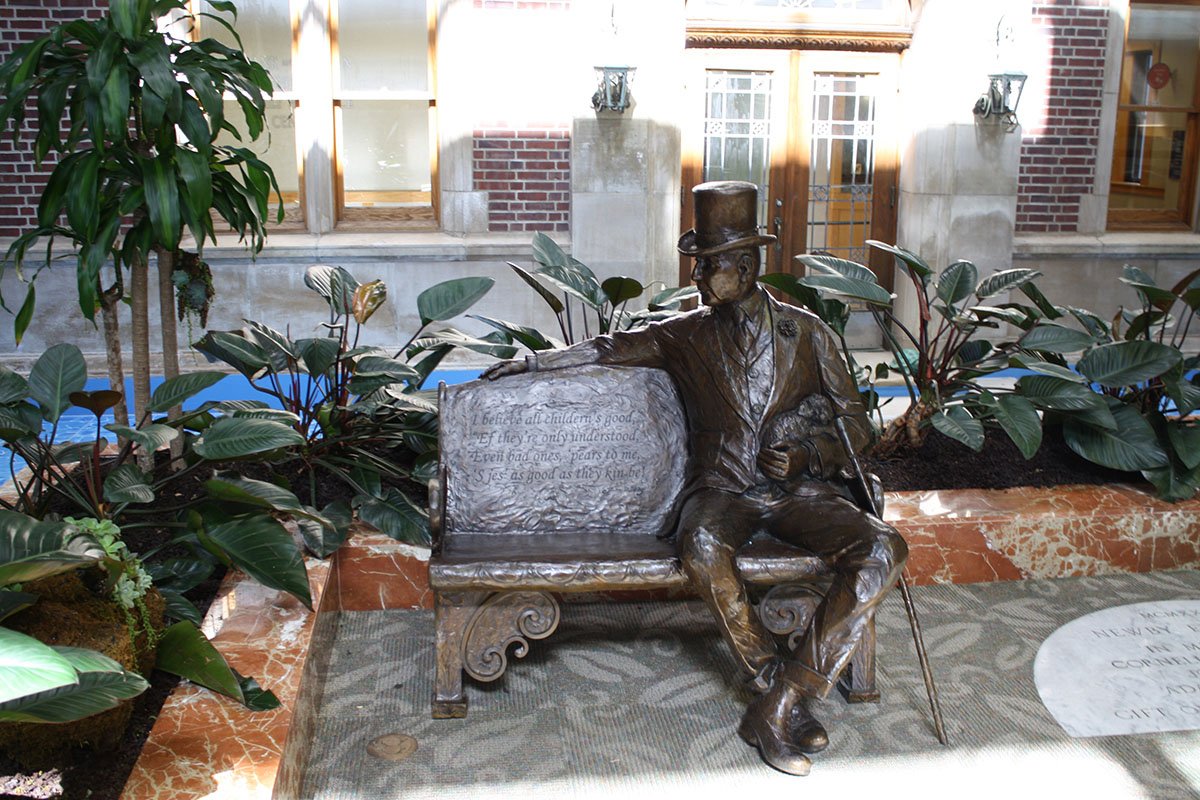Daniel F. Evans, Jr.’s interest in history is contagious. Within minutes of meeting him, a visitor is likely to hear about the values system of Clarian Health Partners, the Indianapolis hospital organization that Evans heads as president and CEO. The values for the three units of Clarian—Methodist Hospital, IU hospitals, and Riley Hospital for Children—include references to the traditions of healing in the three institutions. At Methodist, the tradition goes back to John Wesley himself, the founder of Methodism and a self-taught physician. Wesley emphasized the need of the churches of his time to minister to the sick and recognized the benefits of cleanliness as an aid to good health.
Evans’ own family helped to implant Wesley’s concerns in Indianapolis by joining in an effort to found a Methodist hospital to fill a critical shortage of hospital beds at the turn of the 20th century. His great-grandfather was on the board of trustees that broke ground for the original hospital unit at 16th Street and Capitol Avenue in 1905, and every generation of the family since has been closely involved.
Evans is keenly aware of the history of the buildings in the current Methodist complex. His office is partly in the 1905 section and partly in a wing added in 1967. In the corridor outside the executive offices is a glass case in which he has displayed the 1905 cornerstone and included historical photographs of the cornerstone laying and the building after completion.
Evans calls a stroll through the hospital wings a “walk through the decades,” and he knows the years of construction for each section as he moves through it.
Methodist established an early reputation for the most advanced medical techniques and for treating patients of all income levels from around the state. It grew rapidly and enjoyed philanthropic support of Methodist families as it steadily expanded its buildings.
To the 1905 building was almost immediately added north and south pavilions, then a west wing by 1920. During the next decade, the Jacob E. Wile Memorial Nurses’ Home rose at 18th and Capitol, providing comfortable quarters for the 300 nurses who staffed the hospital and training facilities for the Methodist school of nursing.
The nine-story Julius A. Hanson Unit of 1930 provided 225 additional beds and a children’s floor. Mary Hanson Carey, an Indianapolis philanthropist, donated funds in 1933 to construct an 80-foot-high “Lighthouse of Health Beacon” atop the Hanson Unit. Clarian continues to maintain the lighthouse, which remains on the hospital roof both as a symbol of the healing provided at Methodist and a landmark to identify the complex.
After World War II, Methodist began a steady campaign to respond to what seemed a constant shortage of hospital beds in Indianapolis and to expand into new realms of medical care—psychiatric treatments, children’s diseases, and coronary surgery. By 1960 it was one of the largest private hospitals in the United States, admitting more than 33,000 patients annually.
New wings came at the expense of some of the older pavilions. The 1905 section is now obscured by the 1967 wing, and the south pavilion of 1913 has been removed. However, an immense new complex constructed in the 1980s to house cardiovascular, eye, cancer, neuroscience and trauma services was built to the west of the pre-World War II structures. Evans says that if Methodist expands or renovates again, the history of the buildings will be considered.
The Clarian chief also believes that the physical heritage of a hospital can be more than a link to the past. He thinks that awareness of a setting that has a history of healing going back multiple generations can be comforting to patients. At Riley Hospital, there is a history room in which artifacts associated with James Whitcomb Riley, the “children’s poet,” are exhibited. The original 1920s building is still there, embodying the years of care for children with difficult or rare diseases or injuries.
For patients and families to respond to the heritage of a hospital (or any other institution), Evans says interpretation and visual aids are essential. If the story of the place and the people who have built it, improved it, and used it is explained in an interesting way, those who are treated, live, or work there will tend to have an enriched experience.

Statue of James Whitcomb Riley at Riley Hospital for Children, 2014. James Glass
